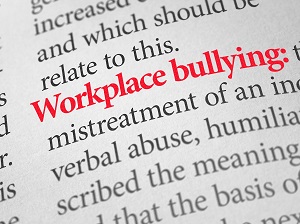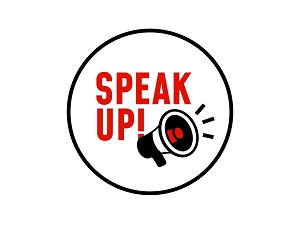Workplace bullying is a health and safety concern for any organization because of the negative impacts that can occur as a result of a hostile work environment. Employees that are victims of or witnesses to workplace bullying can suffer emotional, mental and physical distress which leads to an increase in stress, absenteeism and risk of incidents.

Workplace bullying is repeated, and unwanted aggressive behavior and persistent acts of disrespect directed toward an individual.
A workplace bully often has real or assumed authority over their target which can be position or rank in the company, but it can also be a difference in seniority, job knowledge, expertise, perceived power, body size or strength. A bully may even base their power on gossip, lies or secrets.
While there are currently no specific OSHA standards that pertain to workplace bullying, the General Duty Clause could apply.
OSHA General Duty Clause 5(a)(1) Each employer shall furnish to each of his employees employment and a place of employment which are free from recognized hazards that are causing or are likely to cause death or serious physical harm to his employees.
There may be disagreements and annoyances experienced at work and not every difference of opinion is considered bullying behavior. Consider that someone may be having a bad day when they make a rude comment, a co-worker doesn’t have a personality-type that you prefer, or you aren’t in the mood to take constructive criticism from a supervisor. Finding ways to work well together is not the same as dealing with a workplace bully.
The first time someone at work makes an insulting comment, address it directly and move on, giving them the benefit of the doubt that their behavior was not typical or personal.
Workplace bullying is often repetitive, negative behavior with an intent to consistently dominate another person. Workplace bullying tactics include:
- insults and threats
- intimidation
- mockery, condescension, or humiliation
- gossip and rumors
- sabotage or wrongful blame
- shaming, berating, belittling
- invasion of personal space
- tripping or pushing
- withholding key information
- stealing credit for ideas
- interrupting, preventing others from speaking
- scoffs or makes negative comments when others share ideas

If you feel that you are being bullied at work remember 1) Respond, 2) Record, 3) Report.
1. Respond. It may be uncomfortable to confront a bully directly, but if it is possible, let them know that their behavior is not acceptable and ask them to stop. If it is helpful, ask someone you trust to be with you.
It is usually easier to stop the unwanted behavior as soon as you realize you are working with a bully. Speak with an authoritative tone, have confidence in your abilities and stand up for yourself.
Examples of language you can use for different scenarios:
- Please don’t talk to me that way.
- I hear what you are saying, but I need you to stop doing ______________. I treat you with respect, and I need you to do the same.
- Let’s try to get this conversation back to a place where it can be productive.
Stay calm. Do not retaliate or argue with bullies. You may end up looking like the perpetrator and will end up having to defend your own actions instead.

Take action before it has a negative impact on you, your job performance and your safety. Understandably, individuals may not want to speak up when they are being bullied. They may feel ashamed or embarrassed, believe that no one cares, or think that it is not worth the hassle. Ongoing, long-term bullying can have a negative effect on a person’s well-being, their mental and physical health, and their ability to do their work productively and safely.
2. Record. If your attempts to talk directly to a person with bullying behavior are unsuccessful, or you don’t feel safe to do so, make sure to record all interactions, including the date, time, location and description of encounters, including witnesses and outcomes. Keep copies of any correspondence, including emails. If a bully is making false claims against you, start collecting evidence that demonstrates that their statements are not true.
Every workplace bully scenario is different, and the best response may not be the same for each situation. Consider enlisting the help of trusted allies at work, that you can confide in and get feedback from concerning the best way to proceed. Ensure that you are modeling ethical, respectful behavior in your everyday interactions at work. If you feel that a bullying situation has escalated or could escalate to workplace violence, you should report your concerns immediately.

3. Report. If attempts to stop the bullying behavior have been unsuccessful, report the situation. Who you report to may depend on your workplace reporting policies, HR guidelines, or organizational structure. When reporting a workplace bully, be clear, concise, and as specific as possible. Provide the steps you have taken yourself to stop the behavior, the evidence you have recorded and co-worker names who will support your claims. If your concerns are minimized, do not give up.
If you are not the target of a bully, but you witness that behavior directed towards someone else or another group, speak up and take action much as your position allows. Your silence provides permission for the behavior to continue.
Harassment, a form of employment discrimination, is unwelcome conduct that is based on race, color, religion, sex, national origin, pregnancy, age (over 40), or disability. Harassment becomes unlawful where 1) enduring the offensive conduct becomes a condition of continued employment, or 2) the conduct is severe or pervasive enough to create a work environment that a reasonable person would consider intimidating, hostile, or abusive. If you believe the workplace bullying you are experiencing fits this definition of harassment, take immediate action by recording and reporting your experiences.

.jpeg)

.jpeg)
